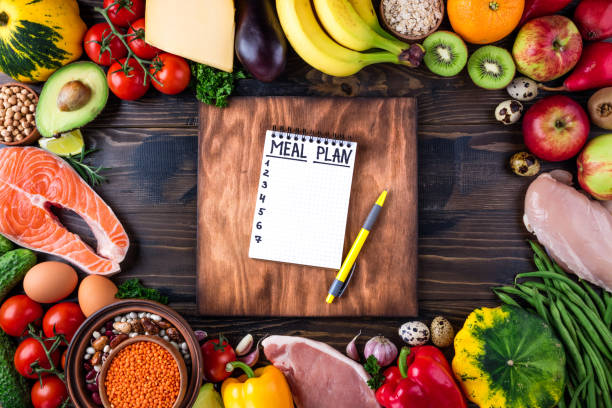Maintaining a healthy diet doesn’t mean giving up the foods you love. In 2025, nutrition experts emphasize balance, portion control, and smart food choices over strict restrictions. Building a balanced meal plan can help you enjoy your favorite treats while meeting your health goals.
Here’s a step-by-step guide to creating a meal plan that works for you.
Understanding a Balanced Meal
A balanced meal includes the right proportion of macronutrients—carbohydrates, proteins, and fats—along with essential vitamins and minerals. It ensures you get energy, support for bodily functions, and satiety without overindulging.
Key components of a balanced meal:
- Proteins: Lean meats, fish, eggs, legumes, or plant-based alternatives
- Complex Carbohydrates: Whole grains, vegetables, and fruits
- Healthy Fats: Nuts, seeds, olive oil, and avocado
- Fiber & Micronutrients: Vegetables, fruits, and whole foods rich in vitamins and minerals
Step 1: Assess Your Current Eating Habits
Start by tracking what you eat for a week. Identify areas where you may be consuming too much sugar, processed foods, or unhealthy fats. This helps you see opportunities to adjust without cutting out your favorite foods entirely.
Step 2: Portion Control Over Elimination
Instead of avoiding sweets or fried foods, control portions:
- Enjoy dessert in smaller servings
- Pair treats with healthier foods like fruits or nuts
- Use mindful eating techniques to savor each bite
This approach reduces cravings and prevents feelings of deprivation.
Step 3: Mix in Nutrient-Dense Foods
Gradually increase nutrient-rich foods in your meals:
- Add vegetables to sandwiches, pastas, and soups
- Include lean protein with every meal to stay full longer
- Opt for whole grains instead of refined carbs
These substitutions improve overall nutrition without sacrificing taste.
Step 4: Plan Meals Around Your Favorites
Identify your favorite foods and design meals around them rather than excluding them:
- Love pizza? Add a side of salad or roasted veggies to balance it
- Enjoy ice cream? Opt for a smaller serving after a protein-rich meal
- Crave pasta? Use whole-grain noodles and add vegetables for added fiber
This strategy allows you to enjoy indulgences responsibly.
Step 5: Stay Hydrated and Mindful
Drinking water throughout the day supports digestion and reduces overeating. Mindful eating—focusing on your food and eating slowly—helps you recognize hunger cues and prevents unnecessary snacking.
Step 6: Prep and Plan Ahead
Meal prep makes it easier to stick to a balanced plan:
- Batch cook proteins and grains
- Chop vegetables for easy additions to meals
- Keep healthy snacks on hand to curb cravings
Planning reduces reliance on processed or fast food when you’re busy.
Benefits of a Balanced Meal Plan
- Sustainable Weight Management: No drastic restrictions mean easier long-term adherence
- Improved Energy Levels: Consistent nutrition keeps you energized throughout the day
- Better Health Outcomes: Supports heart, digestive, and overall health
- Enjoyment and Satisfaction: You don’t have to sacrifice taste or indulgence
Creating a balanced meal plan in 2025 doesn’t require cutting out your favorite foods. By focusing on portion control, nutrient-dense additions, and mindful eating, you can enjoy the foods you love while nourishing your body. The key is balance, not deprivation, making healthy eating both sustainable and enjoyable.

